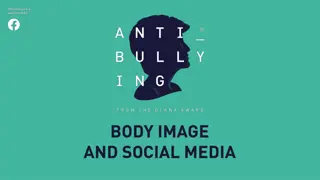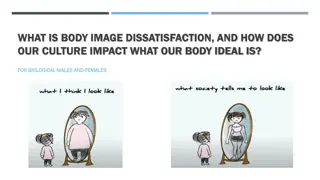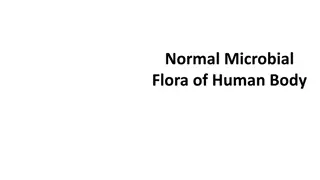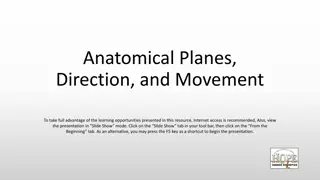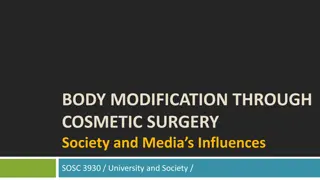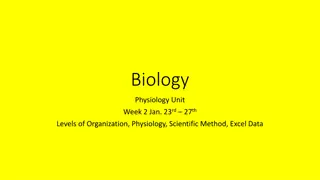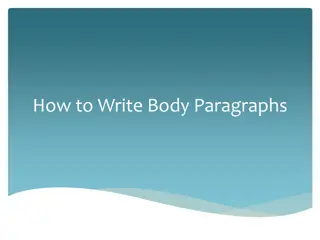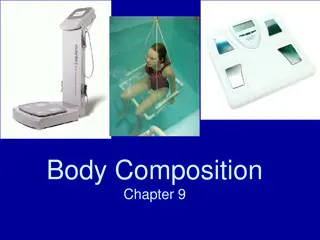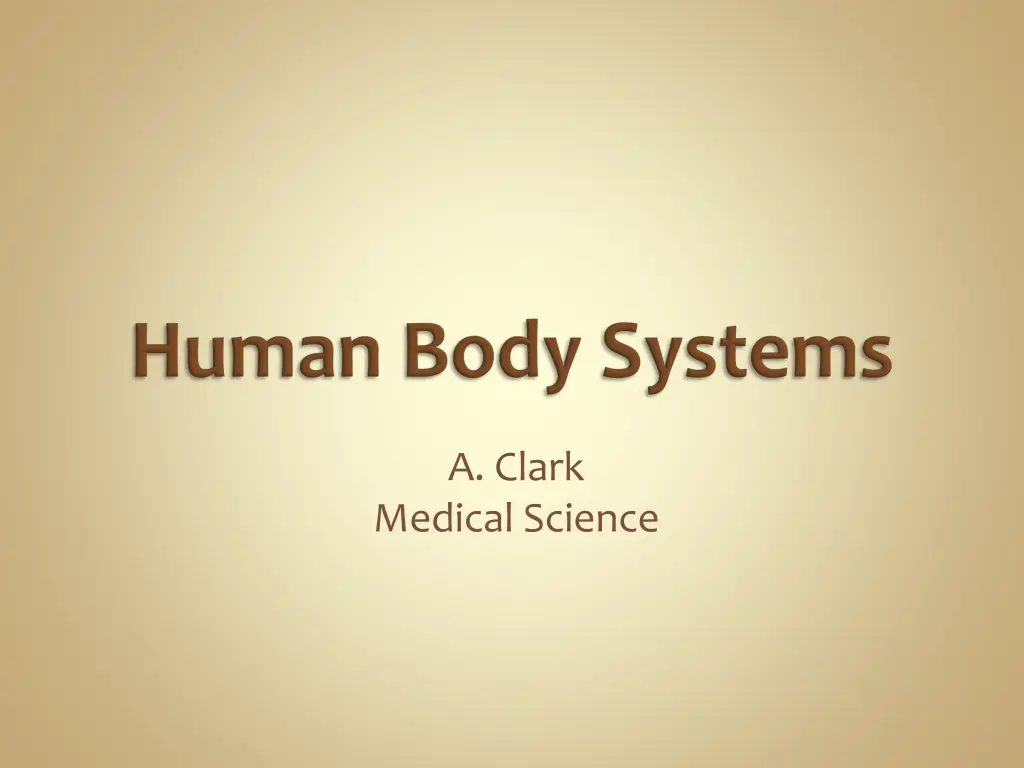
Understanding the Digestive System
Explore the intricacies of the digestive system, from the mouth to the intestines, and learn how different organs work together to process food, absorb nutrients, and eliminate waste. Discover the roles of the liver, stomach, pancreas, and more in this essential bodily function.
Uploaded on | 0 Views
Download Presentation

Please find below an Image/Link to download the presentation.
The content on the website is provided AS IS for your information and personal use only. It may not be sold, licensed, or shared on other websites without obtaining consent from the author. If you encounter any issues during the download, it is possible that the publisher has removed the file from their server.
You are allowed to download the files provided on this website for personal or commercial use, subject to the condition that they are used lawfully. All files are the property of their respective owners.
The content on the website is provided AS IS for your information and personal use only. It may not be sold, licensed, or shared on other websites without obtaining consent from the author.
E N D
Presentation Transcript
A. Clark Medical Science
1. Digestive 2. Urinary 3. Respiratory 4. Circulatory 5. Skeletal 6. Muscular 7. Nervous 8. Integumentary 9. Immune 10. Endocrine 11. Reproductive
The Digestive System converts food into simpler molecules that can be used by cells; absorbs food; eliminates waste.
Mouth The first stop in the disassembly of your food; Mechanical digestion = chewing and Chemical digestion = enzymes found in saliva Pharynx (throat) Epiglottis Small flap that closes over the opening of the respiratory system when swallowing, preventing food from entering the airway. Esophagus Muscular tube connecting the mouth to the stomach
Liver Produces bile, a substance that helps break down fats Gallbladder Stores bile produced by the liver Stomach Muscular pouch like organ where involuntary muscular churning and chemical digestion occurs Pancreas Secretes enzymes to help break down carbohydrates, proteins and fats Small Intestine Narrow muscular tube where digestion of food is completed with the help of enzymes secreted by the liver and pancreas
Villi (plural: Villus) Little projections in the lining of the small intestine that function in the absorption of digested food Large Intestine (colon) Muscular tube where water and salts are absorbed; material spends 18-24 hours here Appendix Tube like extension off of the large intestine Rectum The last part of the digestive system, feces are eliminated from the rectum through the anus
Muscular contains smooth muscle Nervous gets signals that control the rate of digestion Circulatory broken down food travels through blood vessels to cells Endocrine hormones (ex. Insulin) control blood sugar levels
1. Appendicitis 2. Cholecystitis and 3. Cholelithiasis 4. Cirrhosis 5. Hemorrhoids 6. Ulcer
The Urinary System filters blood, maintains electrolyte and fluid homeostasis, and eliminates waste products from the body
Kidneys Help maintain homeostasis by filtering blood to remove waste Nephron Tiny filter that makes up the kidney, there are millions Ureters Tubes connecting the kidneys to the bladder Urinary Bladder Smooth muscle bag that stores a solution of wastes called urine Urethra Tube where urine passed out of the body (*Excretory Only) *Skin *Lungs
Circulatory waste products are carried from the cells to the kidney through blood vessels Endocrine hormones are sent that control water levels and homeostasis Respiratory expels toxic CO2 out of body
The Respiratory System provides oxygen needed for cellular respiration and removes carbon dioxide from the body
Nose and Mouth Respiration begins with taking in air Pharynx (Throat) Larynx Where your vocal cords are Trachea (Windpipe) Passes air into the bronchi Bronchi (singular: Bronchus) Passes air from trachea to the lungs
Bronchioles Each Bronchus in the lungs branches out like a tree into bronchioles Alveoli Sacs at the end of the Bronchioles where oxygen and carbon dioxide are exchanged Diaphragm Muscle that enables you to breathe
Circulatory brings O2 to the cells and CO2 back to the lungs Excretory part of the excretory system to get rid of toxic CO2 from the body
1. Asthma 2. Emphysema smoker s disease from cancer sticks. Progressive loss of alveoli which decreases lung function. Remaining alveoli become enlarged, inelastic, and inefficient. Carbon dioxide remains inside the alveoli. No cure. Breathing treatments help slow progression of disease and improve breathing.
Pleurisy- (first information, there are two layers that surround the lungs. They are covered in blood vessels and nerves. The inner lung-side layer is called the visceral pleura. The outer rib-side layer is called the parietal pleura) In pleurisy, the pleura become inflamed. If/when the pleura become inflamed enough, it causes a sharp, stabbing pain, usually in the side or upper back/chest. Pneumonia- an inflammation or infection of the lungs characterized by fluid buildup in the alveoli. Usually caused by bacteria, viruses, or chemicals.
Carotid Subclavian Aortic arch Abdominal aorta Hepatic artery Renal arteries Iliac arteries Femoral arteries Popliteal arteries Anterior and Posterior tibial Dorsalis Pedis Axillary Brachial Radial Ulnar **You have a heart sketch already, today, you are adding a completely separate sketch of the major arteries
Jugular Left Subclavian Superior Vena Cava Inferior Vena Cava Axillary Basilic Brachial Superior Mesenteric Renal (r and L) Iliac Femoral Poplieteal Anterior and Posterior Tibial Dorsal Venous Arch **Figure 6-25 On page 130
The Circulatory Systems brings oxygen, nutrients and hormones to cells; removes cell wastes; regulates body temperature
Heart The pump that keeps blood flowing through your body Blood Vessels Arteries Carry blood away from the heart Blood Red Blood Cells Carry oxygen to the body cells White blood cells Defend body against disease Platelets Cell fragments needed for blood clotting Plasma Fluid portion of the blood
1. Diastole - relaxed / resting phase 2. Systole Contracted / Squeezing phase 3. Blood Pressure- Systole over Diastole Normal BP is slightly less than 120/80 4. Apex point 5. Tricuspid Valve-Btw Rt Atrium and Rt Venticle 6. Mitral Valve Btw Lt Atrium and Lt Ventricle 7. Stethoschope-
1. Anemia- inadequate # of RBCs, hemoglobin, or both. S/S : paleness, fatigue, dyspnea, and rapid heart rate. Tx : blood transfusion, iron supplements 2. Aneurysm- ballooning out segment of an artery 3. Arteriosclerosis- hardening and thickening of the arterial walls resulting in loss of elasticity. S/S : high blood pressure 4. Atherosclerosis-fatty plaques deposit on arterial walls. Diet high in saturated fat and smoking. Medications and lifestyle change can help.
5. Embolus- a foreign substance circulating in the bloodstream. It could be air, a blood clot, bacterial clumps, a fat globule, or other foreign substance. 6. Hypertension- high blood pressure. 140/90 or higher. Risk factors: family history, obesity, stress, smoking, aging, high sat fat diet/high sodium diet.
Connected to almost all other systems since the circulatory system carries oxygen to all cells
The Skeletal System supports the body; protects internal organs; allows movement; stores mineral reserves; provides blood cell formation
Bones Produce blood cells Red Marrow Produce red and white blood cells Yellow Marrow Consists of stored fat Joints Found where two (2) bones meet Cartilage Surrounds the end on bone to prevent grinding upon another bone Ligaments Tough band of tissue attaching one bone to another Tendons Thick bands of tissue connecting muscle to bone
All on own page 1. Find Labeled Diagram of Facial Bones 2. Cranial Bones 3. Vertebrae 4. Upper Extremities 5. Lower Ext 6. Rib cage 7. Pelvic Bones 8. Hand 9. Foot ------Next Slide----Choose and describe 5 Dz
Muscular system bones and muscles work together for movement Circulatory system and immune system all blood cells (red and white) are made in the bone marrow
The Muscular System produces movement; helps to circulate venous blood, moves food through digestive system
Cardiac Muscle Makes up your heart, is adapted to generate and conduct electrical impulses Skeletal Muscle (voluntary muscle) Attaches to and moves bones Smooth Muscle (involuntary muscle) Found on walls of internal organs and blood vessels
Works closely with the: skeletal system Circulatory brings O2 to muscles and waste products such as lactic acid away Nervous how muscles contract
1. Adduction-moving a body part toward midline 2. Abduction-moving a body part away from the midline 3. Flexion-decreasing the angle between two bones, bending a body part 4. Extension-increasing the angle between two bones, straightening a body part 5. Rotation-turning a body part around its axis 6. Circumduction-moving in a circle at a joint
1. Muscular Dystrophy- a group of inherited diseases that lead to chronic, progressive muscular atrophy. (atrophy means shrinking of the muscle) 2. Contracture-Severe tightening of a flexor muscle resulting in bending (scrunching up) of a joint 3. Muscle spasms-sudden, painful, involuntary muscle contractions 4. Strain-overstretching of or injury to a muscle and/or tendon. S/S include myalgia, swelling, and Limited movement. Tx: rest, ice, compression, and elevation
The Nervous System recognizes and coordinates the body's response to changes in its internal and external environments
Neurons (Nerve Cells) Basic unit of structure and function of the nervous system Long cell with 3 regions 1. Cell body 2. Dendrites Receive impulses and deliver them to the cell 3. Axon Extension of the neuron that carry impulses away from the cell
Brain Control center Spinal Cord Central Nervous System Made up of the brain and spinal cord and coordinates your body s activities Peripheral Nervous System Made up of the nerves which carry messages to and from the central nervous system
The nervous system works with many other systems, but works closely with the: Digestive system Muscular system
1. CVA Cerebrovascular Accident- Stroke-Brain Attack. Occurs when blood flow to the brain is impaired, resulting in a lack of oxygen to brain tissues and destruction to those tissues. A. Hemorrhagic- bursting forth of blood inside the cranial cavity after a vessel has burst. Hypertension, drugs, trauma B. Occlusive- blood clot within a small vessel inside the brain-> tissue post clot isn t receiving adequate oxygenation. SS: Severe headache, ptosis-facial drooping usually one sided, Slurred speech, loss of coordination. Tx: stop the bleeding or remove the clot, reverse the excess pressure on the brain. Recovery varies by severity
The Integumentary System is the barrier against infections and injury; regulates body temperature; protects against ultraviolet radiation
Skin Epidermis: outermost layer of skin covers the surfaces of the body Dermis: inner layer of skin Contains blood vessels, nerve cells, hair follicles, sweat and oil glands Hair, Skin and Nails Made up of Keratin Pigment of skin and hair Controlled by melanin Sweat Produced to help maintain homeostasis Oil Glands
The integumentary contains blood vessels and nerves



